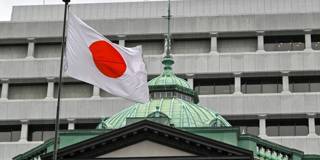The first step toward monetary-policy normalization in Japan went smoothly – with no negative market reaction or exchange-rate depreciation – and it is entirely possible that the next one will, too. But there are plenty of challenges on the road ahead.
TOKYO – Last month, the Bank of Japan took its first important step toward monetary-policy normalization. The BOJ ended its negative interest-rate policy, setting the policy rate between 0.0% and 0.1%. It abandoned yield-curve control, which had been introduced to keep the ten-year government bond yield around 0%. And it announced that it would taper off new purchases of exchange-traded funds and real-estate investment trusts, but maintain the current pace of government-bond purchases. It amounts to a momentous macroeconomic shift.

TOKYO – Last month, the Bank of Japan took its first important step toward monetary-policy normalization. The BOJ ended its negative interest-rate policy, setting the policy rate between 0.0% and 0.1%. It abandoned yield-curve control, which had been introduced to keep the ten-year government bond yield around 0%. And it announced that it would taper off new purchases of exchange-traded funds and real-estate investment trusts, but maintain the current pace of government-bond purchases. It amounts to a momentous macroeconomic shift.